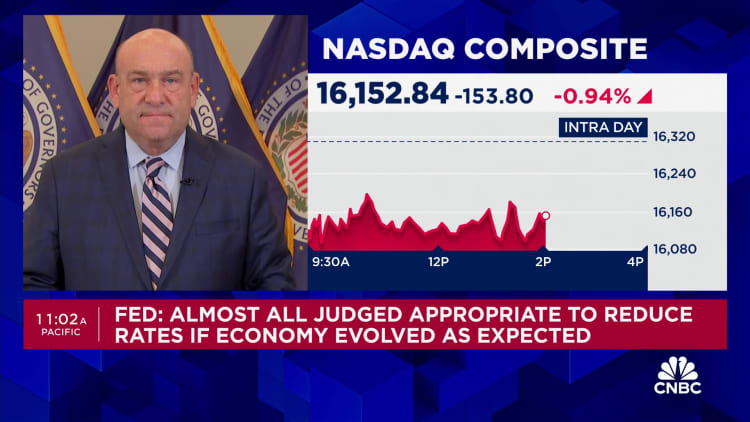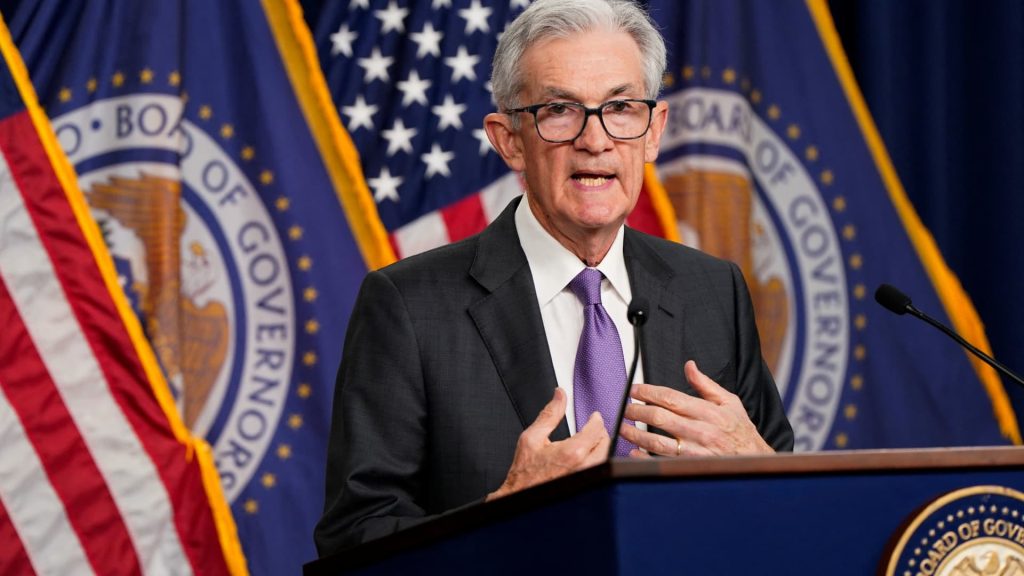
Federal Reserve officials at their March meeting expressed concern that inflation is not falling fast enough, although they still expect interest rates to be cut at some point this year.
At a meeting where the Federal Open Market Committee again voted to keep short-term borrowing rates stable, policymakers also expressed concerns that inflation, while slowing, was not doing so convincingly enough. Currently, the Fed is targeting a base rate in the range of 5.25%-5.5%.
Thus, FOMC members voted to maintain language in the post-meeting statement that they would not cut rates until they “have greater confidence” that inflation is firmly returning to the central bank’s annual target in 2%.
“Participants generally noted their uncertainty about the persistence of high inflation and expressed the view that the latest data did not increase their confidence that inflation is steadily declining to 2 percent,” the minutes said.
In what appeared to be a lengthy discussion about inflation at the meeting, officials said geopolitical turmoil and rising energy prices remained risks that could lead to higher inflation. They also raised the possibility that looser policies could add to price pressures.
They cited a more balanced labor market, the development of technology, as well as China’s economic weakness and the deteriorating situation in the commercial real estate market as negative factors.
US Federal Reserve Chairman Jerome Powell holds a news conference following a two-day Federal Open Market Committee meeting on interest rate policy in Washington, US, March 20, 2024.
Elizabeth Franz | Reuters
They also discussed higher-than-expected inflation figures in January and February. Chairman Jerome Powell said it was possible the two-month reading was due to seasonal issues, although he added it was difficult to say for sure at this point. There were also dissenters at the meeting.
“Some participants noted that the recent increase in inflation has been relatively broad-based and should not be dismissed as mere statistical anomaly,” the minutes said.
This part of the discussion was somewhat relevant given that the release came on the same day that the Fed received more bad news on inflation.
CPI confirms their concerns
The Consumer Price Index, a popular measure of inflation although not one the Fed focuses on, showed a 12-month rate of 3.5% in March. That was above market expectations and represented a 0.3 percentage point increase from February, suggesting the strong start to the year may not have been an aberration.
After the release of the consumer price index, traders in the fed funds futures market revised their expectations. Market pricing now assumes the first rate cut will be in September, with only two this year. Up to this point, the odds were in favor of the first cut coming in June, just three, in line with the “dot plot” forecasts released after the March meeting.
Discussion at the meeting showed that “nearly all participants agreed that it would be appropriate to move to less restrictive policies at some point this year if the overall economy develops as they expected,” the minutes said. “In support of this view, they noted that the process of disinflation continues along a path that would normally be expected to be somewhat uneven.”
During the meeting, officials discussed the possibility of stopping the reduction of the balance sheet. The Fed cut its holdings of Treasury bonds and mortgage-backed securities by about $1.5 trillion, allowing up to $95 billion in proceeds from maturing bonds to be dumped each month rather than reinvested.
No decisions or indications have been made on how the easing of what has become known as “quantitative tightening” will proceed, although the minutes say the contraction will be cut “by about half” from the current pace and the process is set to begin.” . pretty soon.” Most market economists expect this process to begin in the next month or two.
The minutes noted that members believed a “cautious” approach should be taken.


